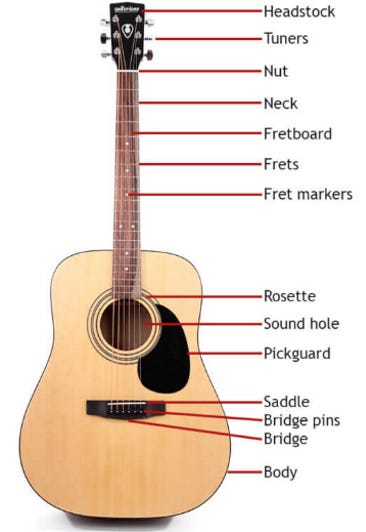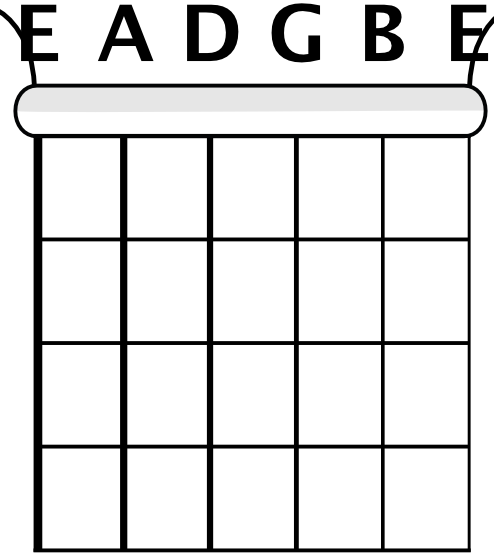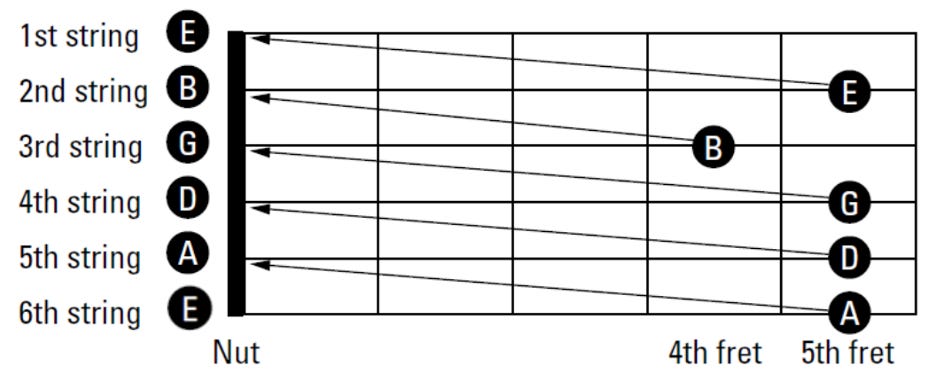Video Guide:
Hello! Welcome to lesson 1 and the start of your guitar learning journey! Let’s start with the basics. Have your guitar in hand as we go through this lesson.
Part 1: #1 Rule: Consistent practice leads to inevitable progress!
Schedule 1 hour of structured practice per day.
- 20 minutes devoted to theory
- 20 minutes devoted to technique
- 20 minutes devoted to a song
In addition to your structured practice, free play is highly encouraged!
Part 2: Guitar Anatomy
Reviewing the diagram below, identify the parts on your own guitar. Spend a few minutes acquainting yourself with your guitar. Notice how things look and feel. Are thing similar to the diagram? Any differences?
Part 3: String names
Next, I’ll have you memorize the names of the strings in standard tuning:
EADGBE
I’ve found it helpful with my students to memorize these in chunks.
EAD;GBE
Play each string and say its name aloud. Do this at the start of each practice day until identifying each string is second nature.
Part 4: Tuning
It is really NO fun to play or listen to a guitar that is out of tune. For this reason, this foundational skill is of upmost importance. Spend some time on this until you are comfortable turning the pegs and matching a pitch.
To start, you need to match your E string to an external source. Use your tuning peg change the pitch of your E string until it matches your external source.
Once your E string is in tune, you can find an A note on the 5th fret. Play the A note (5th fret) on the E string and then play the A string. Using the tuning peg, adjust the pitch of the A string
Consulting the diagram below notice the pattern for identifying the note for each next string. Each string uses the 5th fret to identify the next with the exception of the relation between the G and B which will use the 4th fret.
Like everything, this skill comes with time and consistency. Make sure to do this at the start of every practice. Your ears will thank you.
On to Lesson 2!




